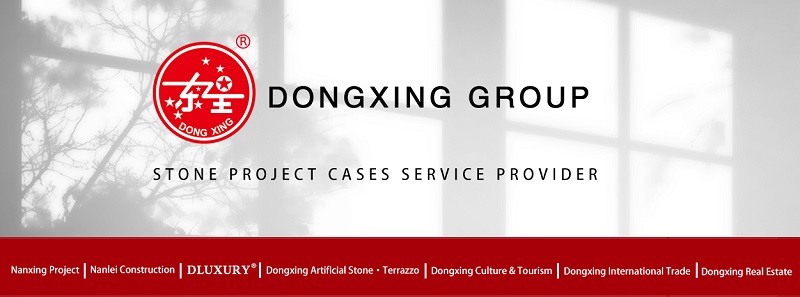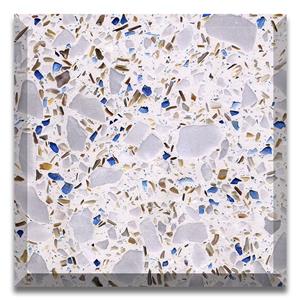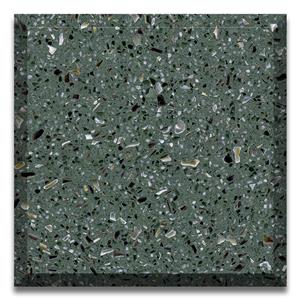What Is Terrazzo Made Of? Complete Guide to Terrazzo Floors and Tiles
Terrazzo is a timeless building material that has been admired for centuries for its durability, beauty, and flexibility in design. From terrazzo floors in airports to terrazzo tiles in luxury bathrooms, or even when exploring terrazzo and marble supply for a project, a key question remains: what is terrazzo made of?
This guide will explore the origins, composition, and modern applications of terrazzo, helping you understand why it remains one of the most popular choices in architecture and interior design.
What Is Terrazzo?
At its core, terrazzo is a composite material created by combining different aggregates with a binding agent. The mixture is poured, cured, ground, and polished to create a smooth, decorative surface.
Historically, terrazzo originated in Italy during the 15th century when marble workers reused leftover marble chips to create cost-effective flooring.Today, terrazzo floors are not only used for cost savings but also for their aesthetic appeal, eco-friendliness, and exceptional longevity.
In short, terrazzo is both a traditional and modern flooring solution that balances functionality with design freedom.
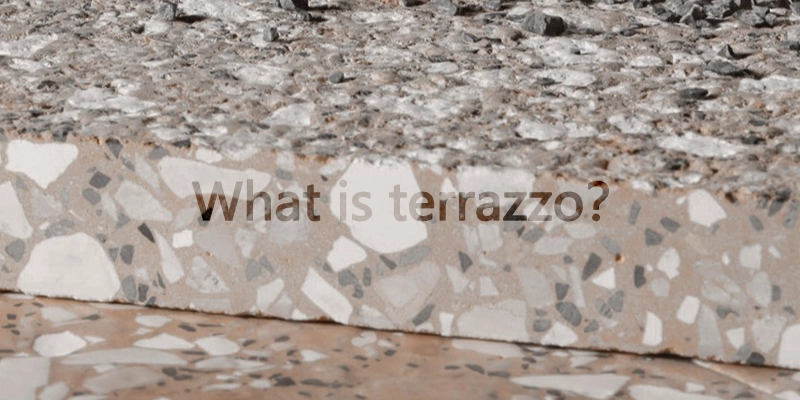
What Is Terrazzo Made Of?
The composition of terrazzo is simple yet versatile. The following components form the basis of terrazzo flooring and terrazzo tiles:
Aggregates
Marble chips (most traditional and still the most popular).
Aggregates may include granite, quartz, or other natural stones.
Recycled materials such as glass, metal, or porcelain.
Binder (Matrix)
Cement-based binders: the traditional option, providing strength and a classic look.
Epoxy resin binders: lightweight, highly durable, and available in many colors.
Pigments
Added to the binder to achieve custom shades and unique designs.
Polishing and Sealants
After curing, terrazzo surfaces are ground and polished to achieve their signature smooth finish.
Sealants protect the surface and enhance its shine.
What materials are used to create terrazzo? Terrazzo represents a carefully balanced combination of aggregates, binders, pigments, and finishing materials—crafted to deliver both beauty and performance.
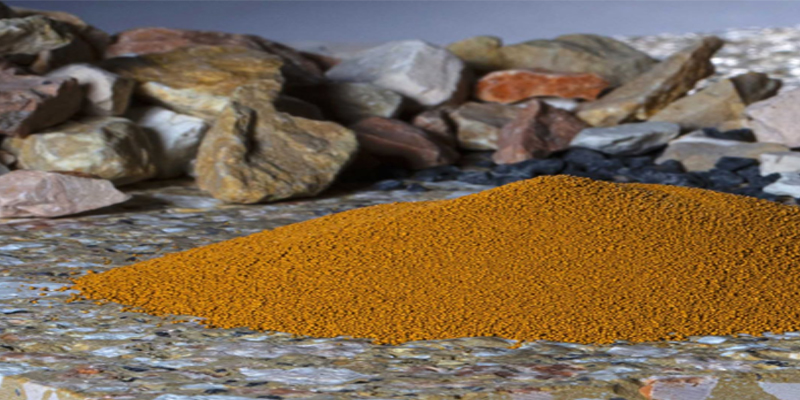
Types of Terrazzo Floors and Tiles
Cement Terrazzo
Traditional method, thicker, and more durable for heavy-traffic areas.
Requires longer curing time.
Ideal for large public projects such as schools, airports, and hospitals.
Epoxy Terrazzo
Modern method using epoxy resin as the binder.
This material is lightweight, allows for efficient installation, and offers a wide range of design possibilities.
Often chosen for residential or commercial spaces where personalization matters.
Terrazzo Tiles
Pre-made terrazzo pieces manufactured in controlled environments.
Easy to install compared to poured-in-place terrazzo floors.
Available in standard sizes and suitable for bathrooms, kitchens, and office spaces.
Terrazzo and Marble Supply: Choosing Quality Materials
When considering terrazzo for a project, the quality of materials is critical. Reliable terrazzo and marble supply companies provide:
1.Consistent aggregate quality (uniform color, size, and durability).
2.Eco-friendly options with recycled glass or stone.
3.Custom terrazzo tile sizes and finishes.
4.Global sourcing to match design and budget needs.
For architects, builders, and homeowners, working with trusted suppliers ensures that terrazzo floors and tiles maintain their performance for decades.
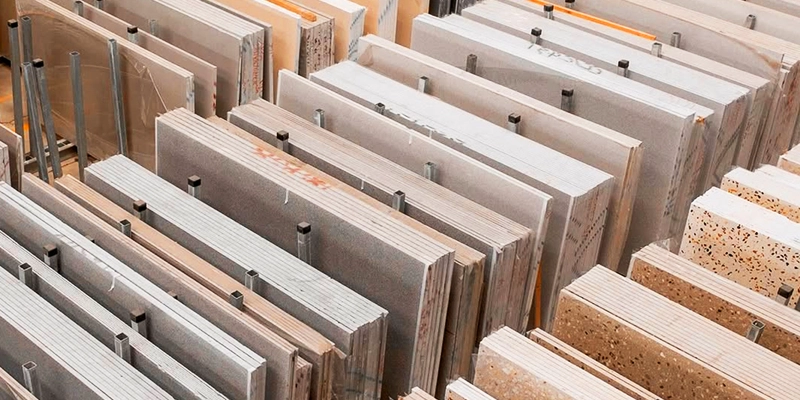
Benefits of Terrazzo Floors and Tiles
Why choose terrazzo over other materials like ceramic tiles or hardwood?
Durability – Terrazzo floors can last 40+ years with proper maintenance.
Eco-friendliness – Often made with recycled materials, reducing environmental impact.
Aesthetic Flexibility – Available in endless color and aggregate combinations.
Low Maintenance – Easy to clean and resistant to stains when properly sealed.
Cost-Effectiveness – While initial installation may be higher, long lifespan makes terrazzo
a cost-efficient investment.
How to Maintain Terrazzo Surfaces
To maximize the beauty and longevity of terrazzo:
Daily Cleaning: Sweep or vacuum to remove dust and debris.
Mopping: Use neutral pH cleaners to prevent surface damage.
Polishing: Schedule periodic polishing to restore shine.
Sealing: Apply protective sealants to resist stains and moisture.
With proper care, terrazzo tiles and terrazzo floors remain stunning for generations.
Conclusion
So, what is terrazzo made of? The answer is simple: terrazzo is a composite material created from marble chips, stone aggregates, and other elements bound together with cement or epoxy resin. Its polished finish, strength, and design flexibility make it one of the most durable and beautiful flooring solutions available today.
Whether you are considering terrazzo tiles for a home renovation or terrazzo floors for a large commercial project, this versatile material continues to prove its value across centuries.
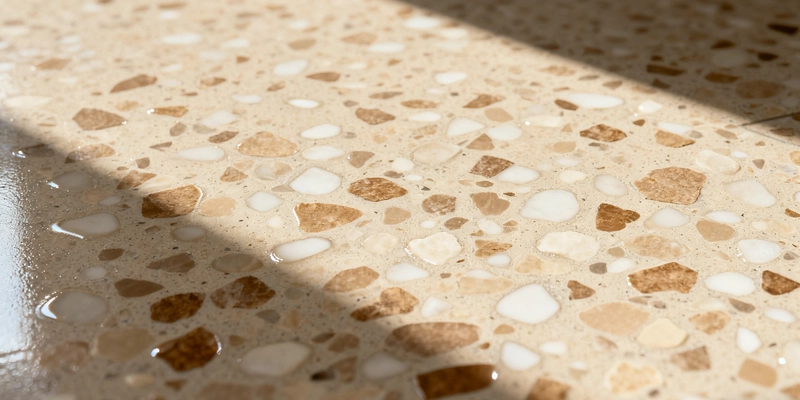
FAQ
1.Terrazzo and marble: what are the key differences?
No. Terrazzo contains marble chips as part of its aggregate, but it is a composite material, not solid marble.
2. What is the difference between terrazzo tiles and terrazzo floors?
Terrazzo floors are poured in place, while terrazzo tiles are pre-manufactured pieces that can be installed like ceramic tiles.
3. Terrazzo as a sustainable building material.
Yes. Many terrazzo floors and tiles use recycled materials, making it a sustainable building choice.
4.What is the typical lifespan of terrazzo floors?
With proper care, terrazzo can last over 40 years, often outliving other flooring types.
